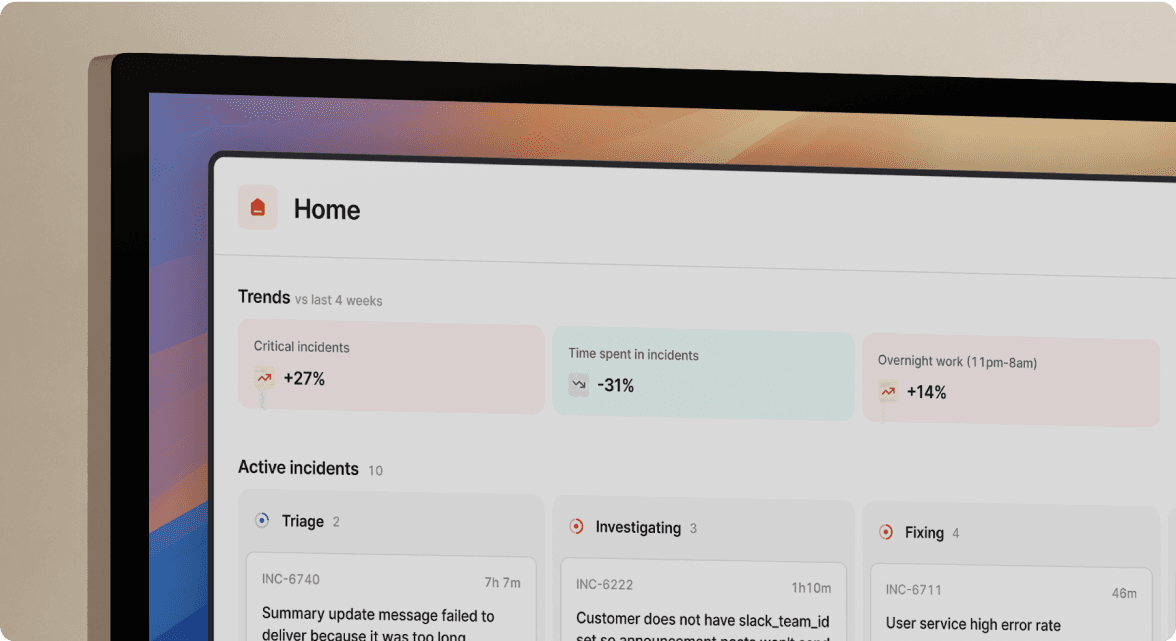All onboard!
July 19, 2021

Over the last week we've been busy making it even easier for your whole organization to onboard with incident.io. Whether it's simple step-by-step instructions for the installer, or helpful messages to folks after they've participated in their first incident, we've got you covered.
What we shipped
New
- We've overhauled our sign-up and installation process. You'll now be taken through a full onboarding process in preparation for your first incident.
Improvements
- We now handle redirects during login, so when you click that link to an incident, you'll actually get there.
- After providing an update with
/inc update, we'll now prompt you to check the incident summary still makes sense. A few minutes getting everyone on the same page can save hours later on. - It's possible to close a Statuspage.io incident without marking your components as operational. We now smooth that rough edge by prompting you to resolve them all together.
- 👷🏽♀️ We shared a blog post about a Postgres feature that caused some incident numbers to jump by 32. If edge cases in databases are your bag then check it out!
- 👷🏽♀️ We got caught out by a Slack workspace where channel creation was restricted to admins. We now handle that case to avoid half-complete installs.
- 👷🏽♀️ We've made improvements to our logging setup, so it's easier to pinpoint bugs when they (very rarely 😉) pop up.
Bug fixes
- We've fixed a problem that would sometimes prevent pinned Slack messages with images from showing up in the timeline. All fun and games until caching gets involved, but we've fixed this now.
- When you closed an incident via the
/inc updatecommand whilst also changing the severity, we'd show the old severity in the closure modal. Now, thanks to a report from the folks at Ziglu, we show the correct one.
- 👷🏽♀️ We used to restrict Slack channel names to simple characters and numbers, despite Slack supporting diacritics. We now support everything Slack does, which is àwęšõmê!
So good, you’ll break things on purpose
Ready for modern incident management? Book a call with one of our experts today.

We’d love to talk to you about
- All-in-one incident management
- Our unmatched speed of deployment
- Why we’re loved by users and easily adopted
- How we work for the whole organization



